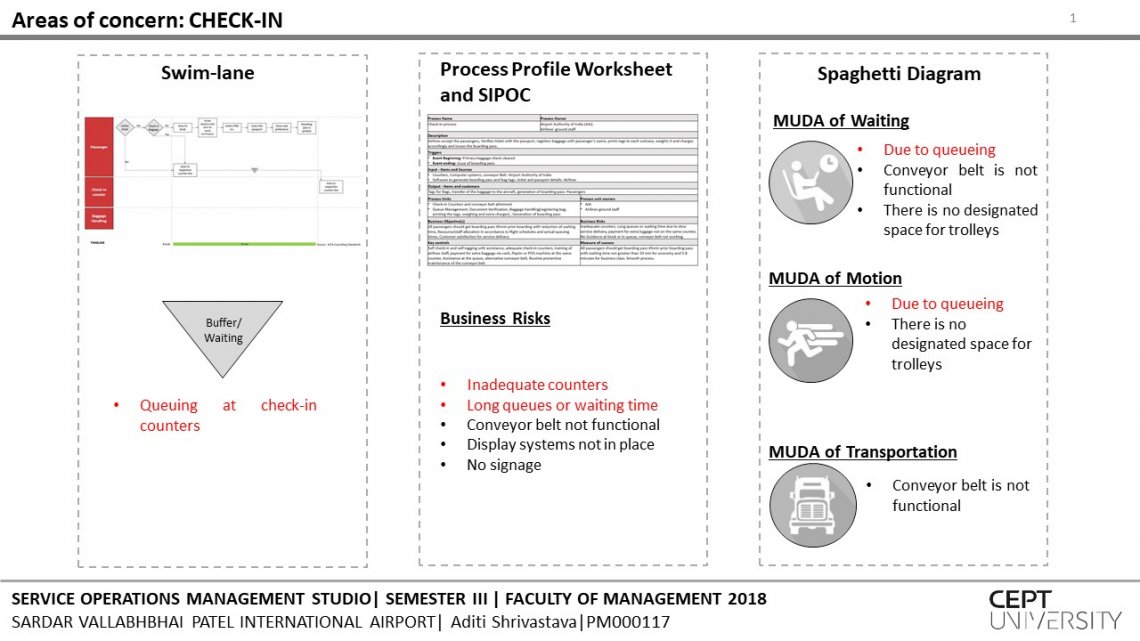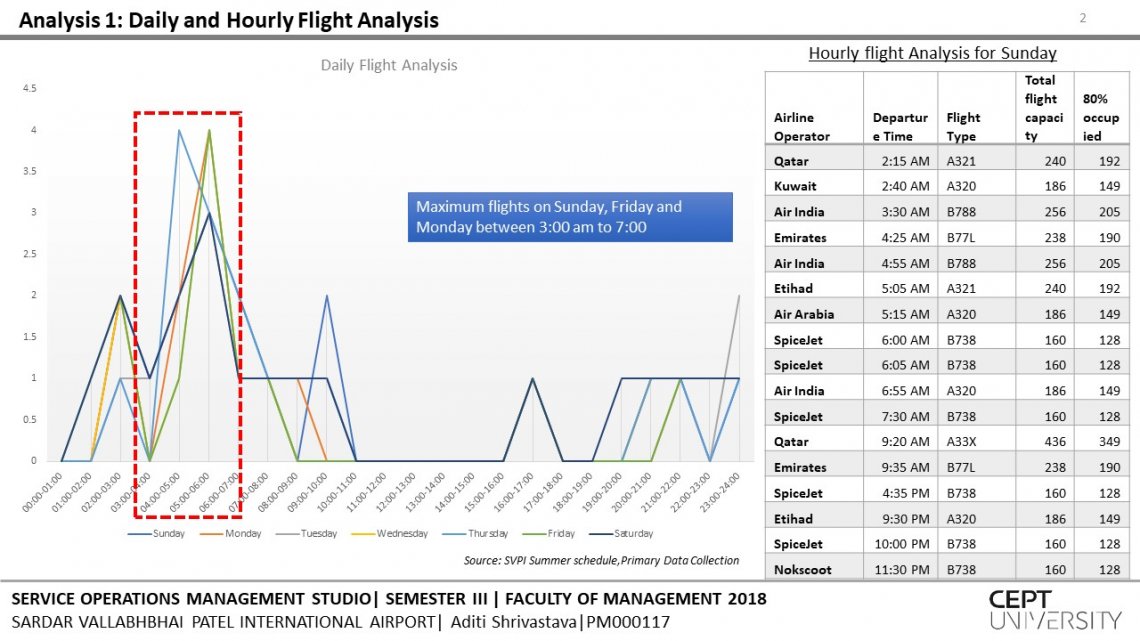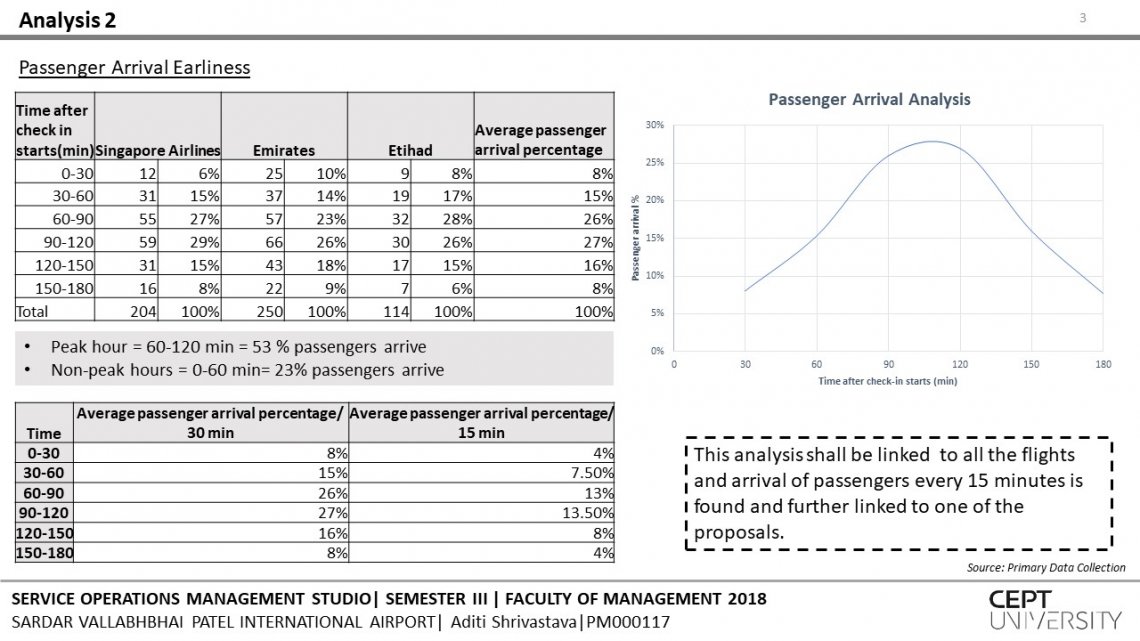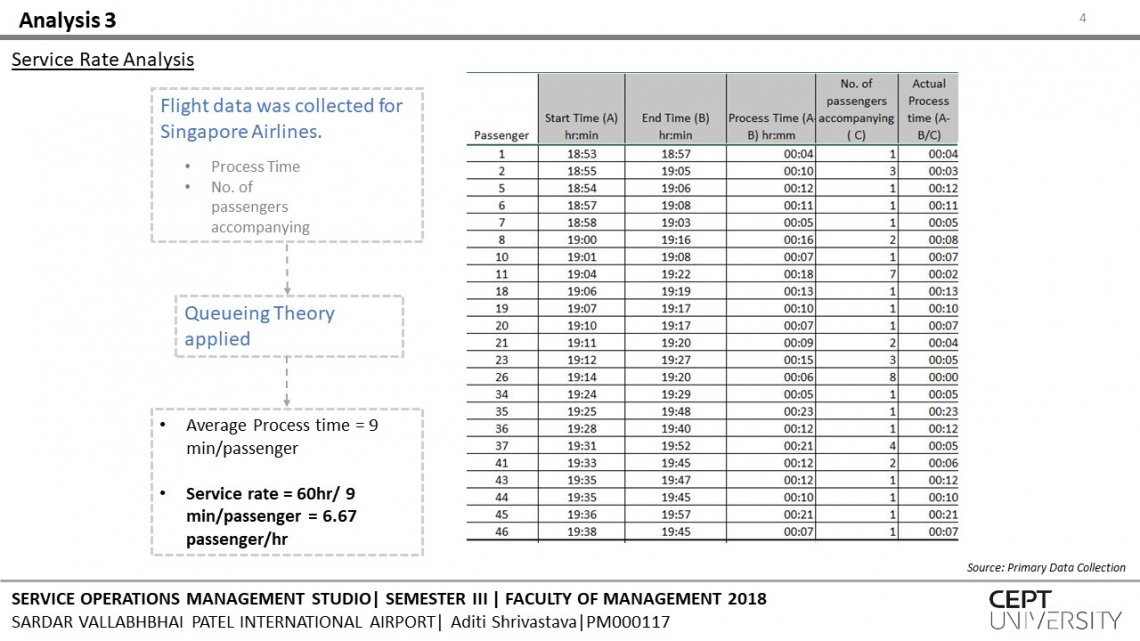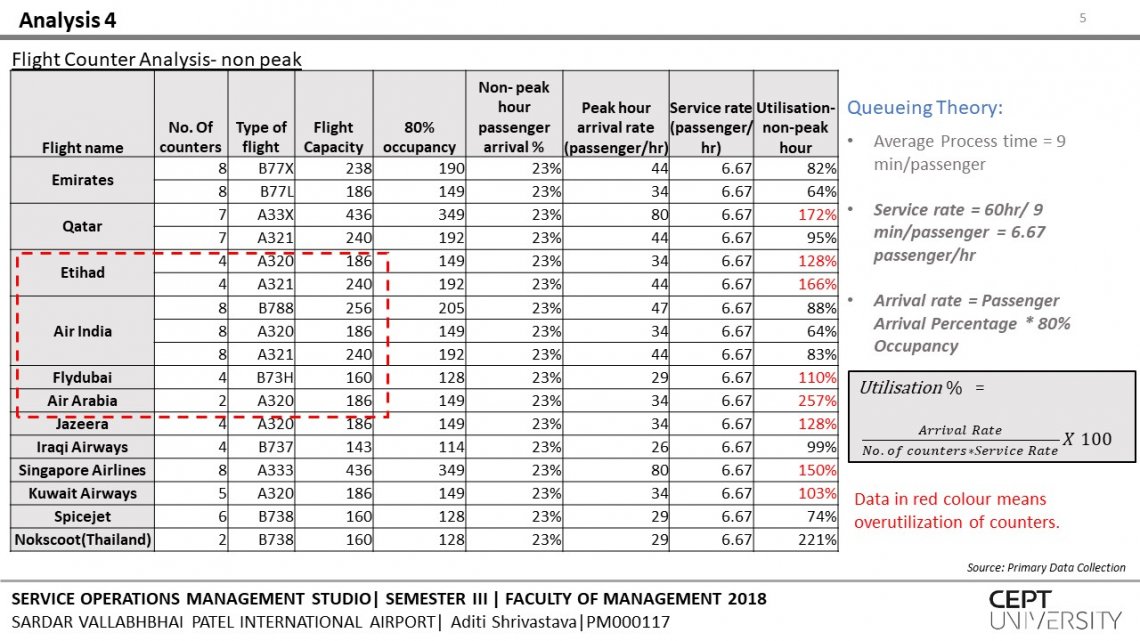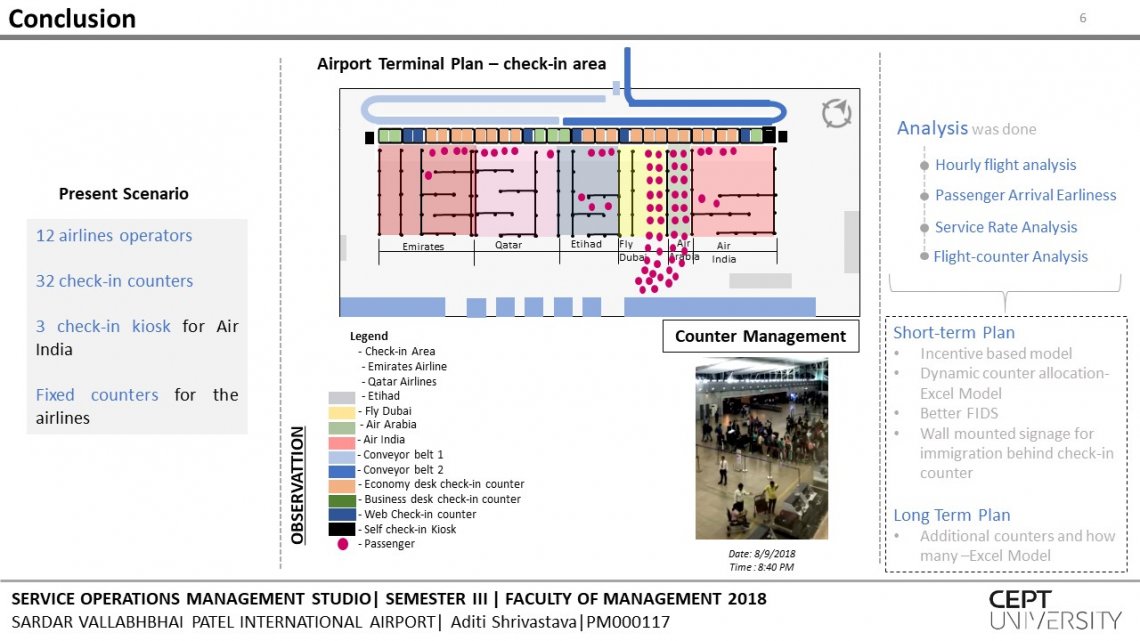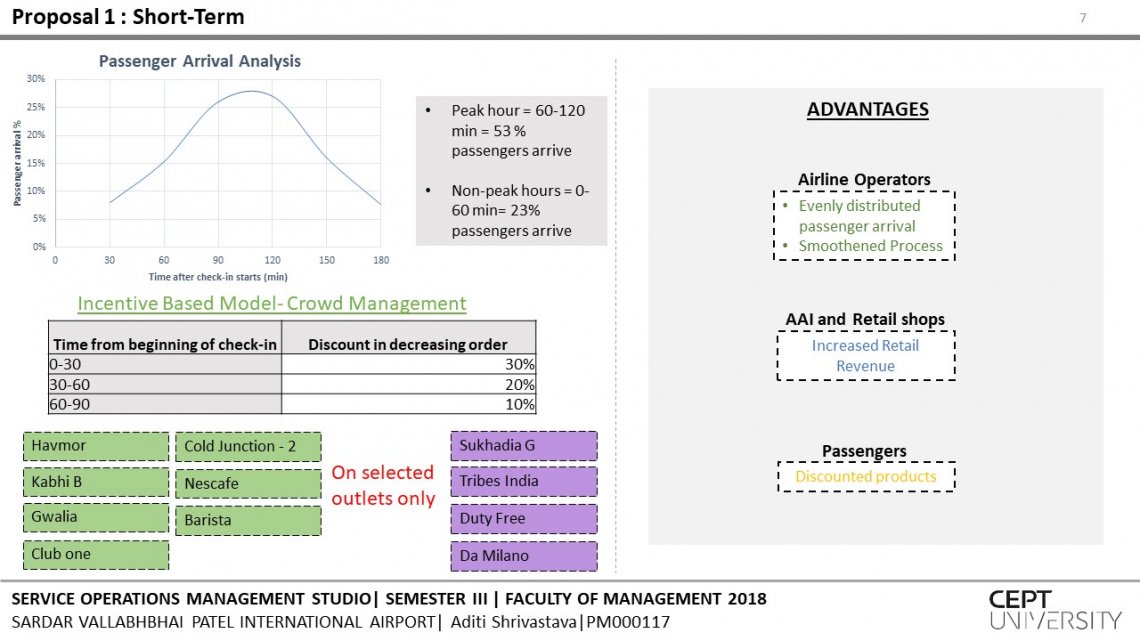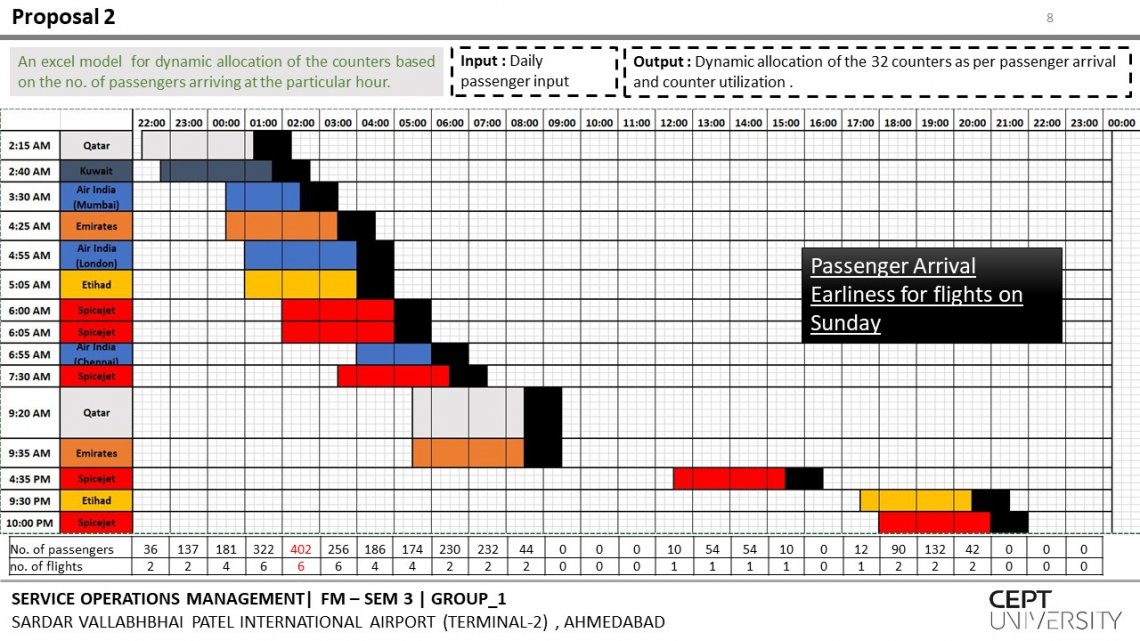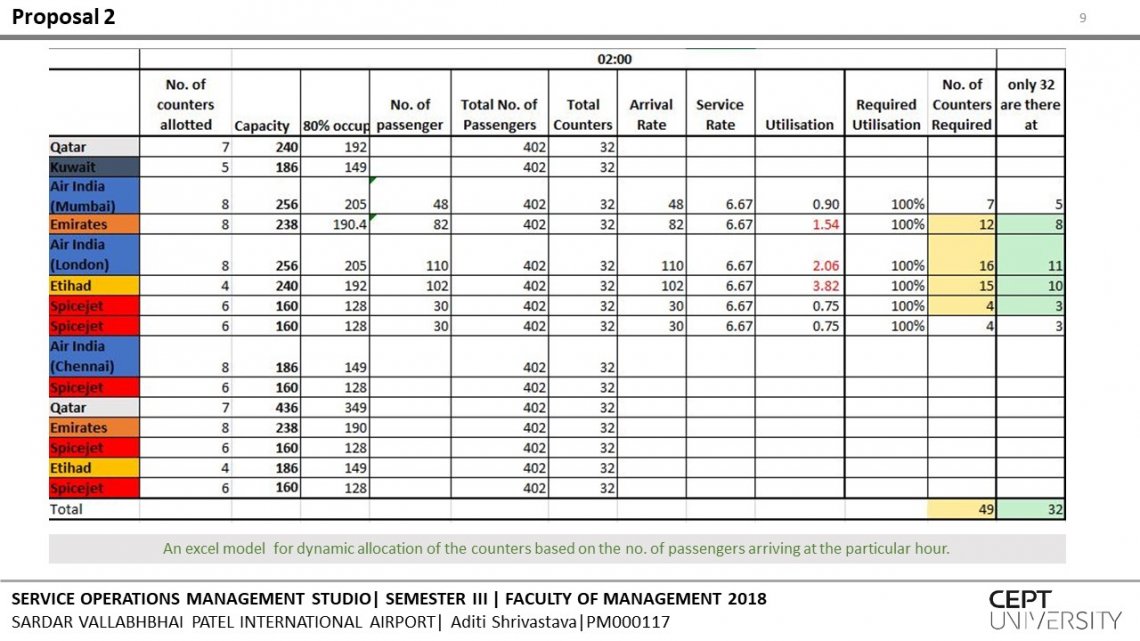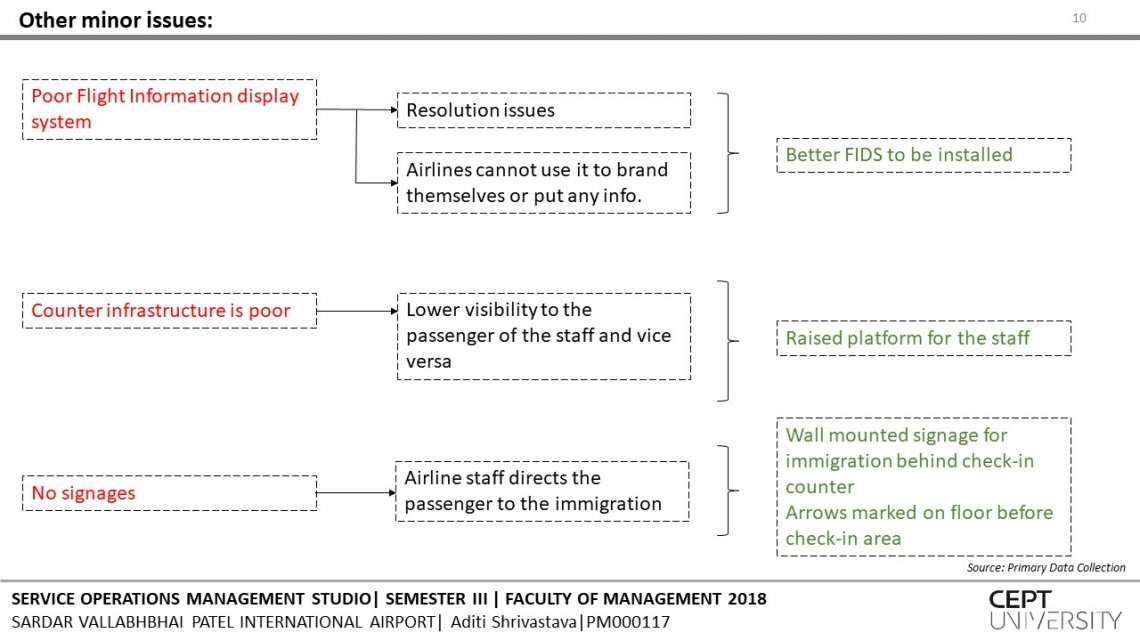Your browser is out-of-date!
For a richer surfing experience on our website, please update your browser. Update my browser now!
For a richer surfing experience on our website, please update your browser. Update my browser now!
As a part of Service Operations Management studio for the International airport, process mapping was done using tools like RACI, process profile worksheet, pareto chart, etc to find out the areas of concern. Along with these, some lean tools were used for in-depth analysis. Also, queuing theory was applied and comparison with the standards provided by IATA, was done service-wise to reach the root cause of the issues identified earlier and accordingly with the help of these tools and the analysis, solutions have been suggested to ensure that the processes work smoothly , thereby improving customer experience.
